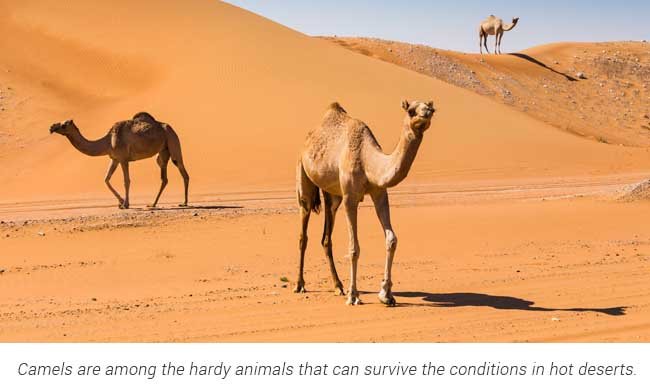Deserts, forests, grasslands, and tundra are among the major animal habitats found on land.
Deserts
A desert is a land habitat with very dry soil, extreme temperatures, limited sources of water, and very little amount of rainfall. In some deserts, years may pass before any rainfall is experienced.
Many people think all deserts have very hot temperatures. Extremely hot and dry temperatures are true for deserts in Africa, Central Asia, and the Middle East. However, there are also deserts with very cold climate, like those in the Arctic region. Moisture in these deserts is in the form of ice and snow.
Because of extreme temperatures and lack of moisture in a desert habitat, only a few animals and plants survive in it. Only those animals that do not eat plants can survive in the cold deserts. Plants that need a lot of water also perish in this environment.
With the distinctive hump on its back, the camel is the most familiar example of animals in hot deserts. Its hump is made up of fat tissue that its body is able to use when the camel has to go without food and water for some time in the desert. Because of this fat tissue, the camel can keep on without feeling much weakness despite the very hot temperature and the lack of food and water. Most camel breeds have only one hump while some breeds have two.
Camels are generally domesticated, or have been tamed to live with people, although there are still a few wild species. They can live out in the open desert, even under the intense heat of the sun. Their thick coat of hair protects them from the sun’s heat. They are used for carrying things and as a means of transport for people.



